
The past three-plus years have been anything but normal for CWU’s international programs.
With travel to and from the university severely limited due to pandemic restrictions, Central students, staff, and faculty were forced to recalibrate their expectations about exchanges, study abroad opportunities, and even tourist visits.
While international students and education abroad programs experienced perhaps the most extreme turmoil between 2020-23, the pandemic also provided opportunities for fresh thinking that have proven highly beneficial to how CWU approaches international education.
••••••••
Years of Building Goodwill
The confusion and uncertainty created by the pandemic threw every university’s international exchange programs into disarray. But Central’s long-term relationships with foreign institutions like Asia University allowed CWU to receive international students earlier than most.
“They trusted us and we trusted them because we’d historically worked so closely together,” said Nicki Kukar, director of CWU’s International Student and Scholar Services (ISSS) and the Asia University America Program (AUAP).
Central proposed a two-month AUAP trial program in February 2022, when travel was still restricted in most countries. Thanks to Central’s strict safety protocols, a small cohort of Japanese students from Asia University came and studied for seven weeks, with almost no issues.
CWU was then able to parlay that successful pilot into exchanges with other institutions outside of the U.S.
“Our Japanese partners ended up sending quite a few students to Central, because other places either weren’t open yet or weren’t ready,” Kukar said. “Central was at the forefront, saying ‘Yes, we want students. We’re ready.’”
ISSS’s bold stance paid off, and CWU’s international student population recovered before many other colleges and universities.
“Our numbers last fall were really healthy because of the backlog of students who wanted to study internationally and because we were primed before most U.S. schools,” Kukar said. “We were ready to take that chance.”
There are currently around 440 international students from 67 countries at Central—368 of whom are degree-seeking undergraduate and graduate students. Many come either on their own or as cohorts through exchange programs like AUAP. Some enroll as English language learners through the University English as a Second Language (UESL) program, and many are transfer students at Central’s eight university centers and instructional sites.
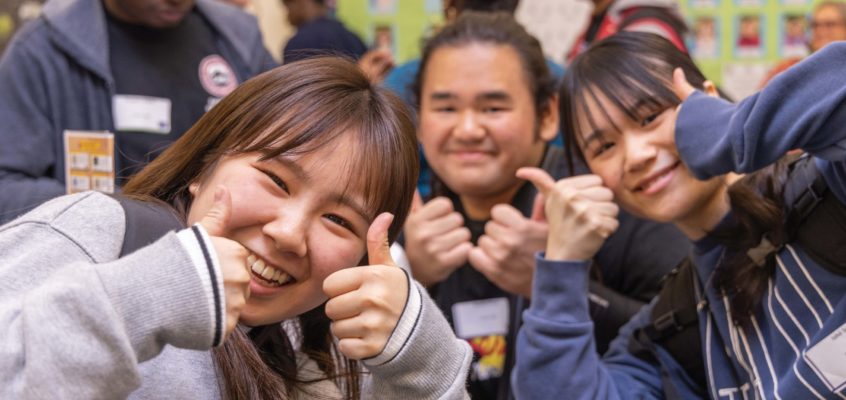
AUAP students (from left) Takeda Ako, Maeda Chihaya, and Ishii Sesena get to know other international students at CWU’s International Student Welcome event in early October.
Prior to the pandemic, ISSS had hired an international student recruiter to increase the number of degree-seeking students at the centers. Preliminary recruitment efforts were successful, until the pandemic forced closures of many programs appealing to international students. Now ISSS has changed its focus to recruiting for information technology and computer science programs offered in Ellensburg and at the centers.
“We’re working together more with departments to make sure that the transition for international students is really smooth,” said Stacy Soderstrom, associate director of ISSS. “It’s a lot more cross-collaboration.”
Another unforeseen benefit is that after being forced to conduct courses and other business online during the pandemic, many aspects of ISSS have been permanently altered, often for the better.
The shift to Zoom allowed for “combined coursework,” where international students match up with a CWU course. For instance, Central students taking East Asian geography might meet with Japanese students on Zoom to talk and share information. Or, former AUAP students living in Japan might meet virtually to talk about Japanese culture with CWU students about to visit Japan.
“The students from Japan who were here had been helped—maybe not by these Central students, but by others, so they want to repay that,” Kukar said. “It’s just really neat. To me, that’s what international education is all about: providing opportunities for students to connect with students.”
••••••••
Reimagining Recruitment
Zoom has also eased some aspects of recruiting international students. Pre-pandemic recruiting required arduous travel to reach would-be students and partner programs. Now, it often only requires being able to wake up and turn on the computer in the middle of the night.
“We pivoted to all online virtual recruitment: webinars, virtual fairs, virtual high school visits, drop-in hours, tons and tons of events,” Soderstrom said. “I think what was great about the pandemic was allowing us to think more broadly. We were able to recruit in countries and regions we haven’t been to yet because we hadn’t had the budget or the time to travel there.”
The virtual approach to recruiting has quickly become a major success story for CWU. Applications have increased, and the international student population has diversified significantly. In just eight years, the number of countries represented rose from 30 to 67, with students now coming from places like Madagascar, Burkina Faso, Pakistan, Tunisia, and Rwanda.
“A lot of the increase is the result of being more deliberate in connecting with students in their area,” Soderstrom said. “Being able to put Central’s name out there and be more visible to more of the world has been a really exciting part of this new realm of recruitment.”
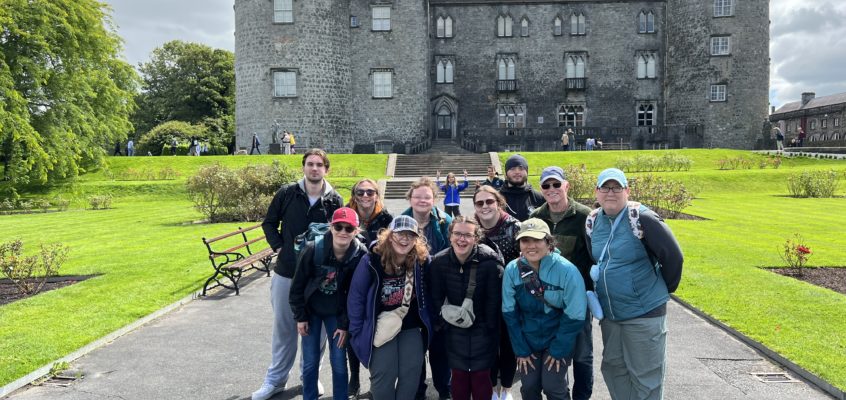
A group of CWU students and professors traveled to Ireland in August for the first time since 2019.
Soderstrom added that a significant side benefit to virtual recruiting is that it is far less physically demanding on recruiters.
“Traveling internationally is one of my favorite parts of my job,” she said. “But, you know, I’ve also gotten really settled with being here, so I’m okay not being on the road for tons of time. Being in five to eight countries and being gone for six weeks every fall is kind of exhausting.”
Of course, Zoom hasn’t entirely replaced physical travel. In December 2022, Kukar and others, including former Provost Michelle DenBeste, visited some of Central’s mainstay partners in Japan. Soderstrom and another recruiter planned to hit the road this fall to Brazil, Vietnam, and Qatar, among other locales.
And although some international transfer students enjoyed the flexibility of online coursework, students are generally happy to be back in person.
“Everything’s open, travel’s a lot easier, and there are fewer restrictions,” Soderstrom said. “Students can fulfill their university dream and lifestyle more easily than they could during the pandemic, which is nice. Participating in all of the activities, events, sports, going on trips with friends, all that good stuff. They’re excited to be back.”
••••••••
Study Abroad Is Back
While CWU was more prepared than other Washington institutions to receive students from other countries, it was not ready to send our students abroad. Pre-pandemic, around 240 Central students per year participated in short- and long-term education abroad programs. But in 2022, only 109 students studied abroad, and most of those were individual programs through either CWU exchanges or third-party sponsors.
“We had a surge last fall of students wanting to study abroad, most of whom had been planning on it since before the pandemic,” said Steve Cook, associate director of education abroad. “But looking at next year, there are fewer students who want to go, at least for the full-semester and academic-year programs.”
Prior to 2020, the bulk of international study abroad opportunities had been small, faculty-directed programs. But the uncertainties of the pandemic, and the need for extensive contingency planning, led most faculty to postpone their programs.
With pandemic restrictions loosened, short-term, faculty-led programs began to pick up once more, with groups this year going to Japan, Ireland, and Ecuador.
Based on his observations evaluating application essays for a national study abroad scholarship program, Cook thinks it may take some time for study abroad numbers to reach previous levels.
“I think the pandemic did a number on people psychologically,” he said. “Students on campus are feeling the after-effects, and some of that manifests in just focusing on the classes they need for graduation.”
To bolster student awareness of education abroad, Cook’s office has increased its presence at orientations and admitted student days.
“I’ll talk to parents about what’s possible as far as study abroad, with the idea that maybe they’ll talk to their students. And their student will eventually come to us,” Cook said, adding that once the effects of the pandemic wear off, he hopes numbers of both individualized exchanges and faculty-led education abroad programs will rebound.

In the meantime, his office has a variety of initiatives that are designed to make education abroad more appealing to students. One effort involves creating more focused possibilities to make the experience feel less overwhelming.
“We’re working with our language department so that, in addition to regular exchanges, we have some options for students who may want a different type of experience, maybe shorter term,” Cook said. “We have specific exchange partners and we can say to students, ‘This will be your dedicated partner and program.’”
•••••••••
Looking Ahead
The Office of International Studies and Programs is also working on a branded internship abroad program to help students gain experience in international business and other disciplines.
“The idea is that, hopefully, that makes decision-making a little easier for students,” Cook said. “We’d essentially be putting together a package for students who want the simplicity of having something prepackaged.”
Another key pillar for the International Studies office is to establish a stronger presence at the sites and centers. Cook hopes to not only encourage nontraditional students to get involved in education abroad; he wants to invite instructors to include these students in their plans for faculty-led study abroad programs.
“We’re trying to encourage faculty to develop directed programs, as most of them are here on the main campus, to make sure students at the centers have the same opportunities,” he said.
One thing is certain: while the pandemic created serious disruption for international student exchanges at CWU, it also gave everyone the opportunity to take a fresh look at how they approach international education.
“Before COVID, people took international exchanges for granted, and they didn’t throw themselves into it or appreciate it like they do now,” Kukar said.
After being forced to navigate pandemic travel restrictions, students and faculty now have a renewed appreciation for education abroad, she added. As a result, the value has become much more apparent.
“Once it was gone and the world stopped turning, then suddenly everybody’s like, ‘Wait a minute, something’s missing,’” Kukar said. “And now it’s back. And there’s just a lot more joy around it. People are just thrilled to be involved.”


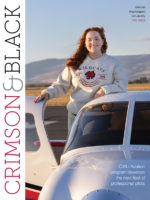
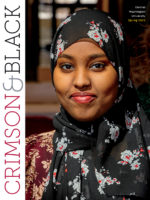

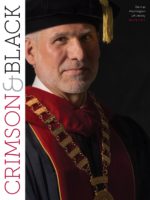
comments powered by Disqus